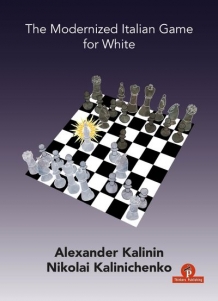Alternatieve artikelen:
€38,95
This book is about the Nimzo-lndian Classica! line 4.Qc2 (also known as the Capablanca Variation}...
€31,95
For more than a hundred years, nothing threatened the leading role of the Spanish Opening among the...
€25,95
Volume 2A is the third out of four brand new volumes in which Avrukh revamps, expands and generally...
€33,95
The Najdorf Variation of the Sicilian Defence, named after the great PolishArgentine grandmaster,...
€32,99
The Sicilian Taimanov arises after the opening moves 1.e4 c5 2.Nf3 e6 3.d4 cxd4 4.Nxd4 Nc6, and is...
€24,95
In the seventh and final book of the series we will complete our quest and finalise the building of...











